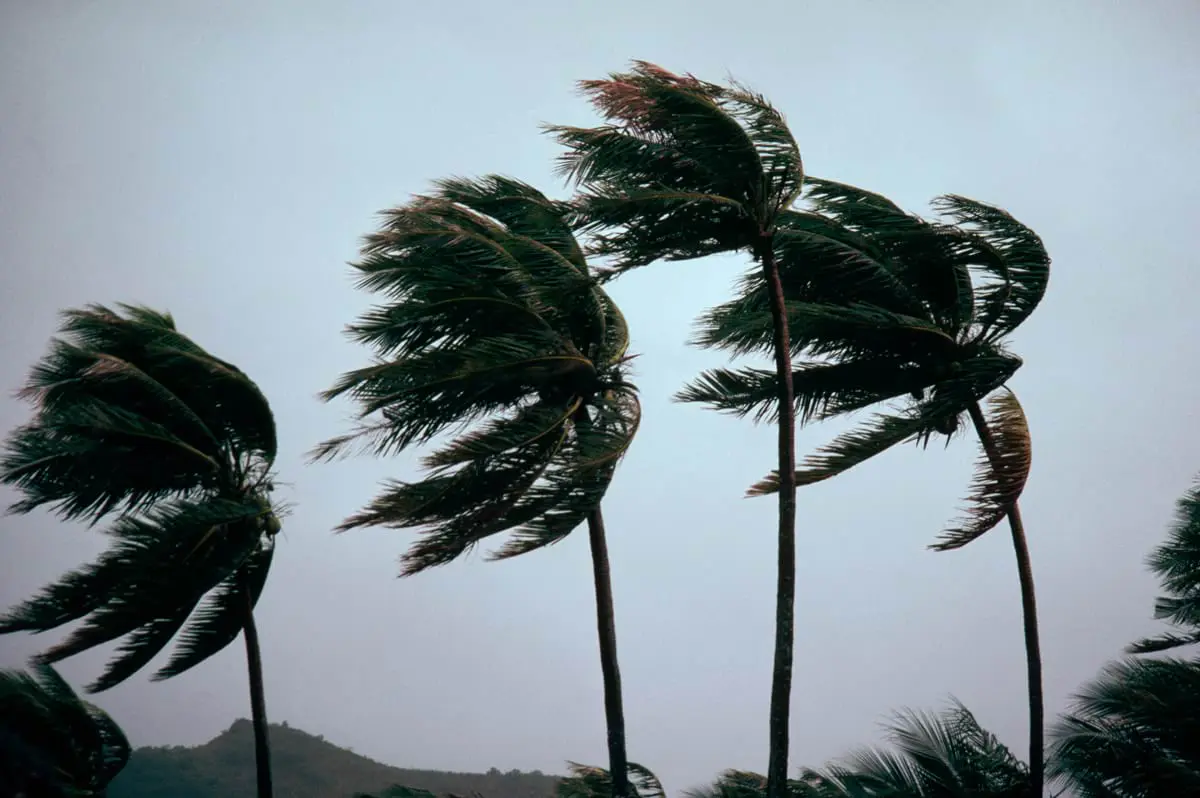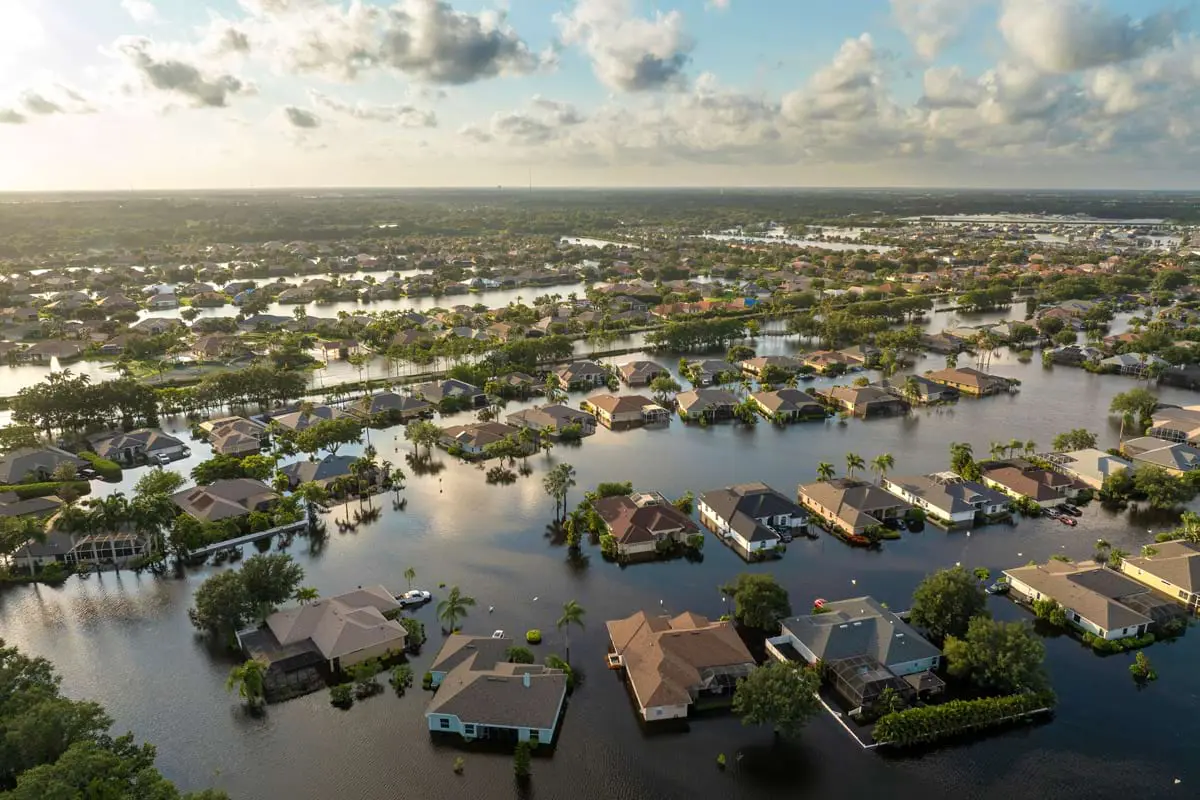Hurricanes are among the most powerful and destructive natural disasters, with the potential to cause devastation along coastal areas and further inland.
To better understand their impact, meteorologists use the Saffir-Simpson Scale, which categorizes hurricanes based on their sustained wind speeds. Understanding these classifications is essential for public safety, preparation, and emergency response.
At Acuity, we are committed to supporting emergency and disaster response and recovery by providing critical insights and resources to help organizations and individuals act swiftly and effectively, minimizing risk and enhancing resilience in the face of these powerful storms.
In this blog, we explore how many categories there are for hurricanes and discuss why understanding them is crucial for emergency response.
Table of Contents
What is the Saffir-Simpson Hurricane Wind Scale?

The Saffir-Simpson Hurricane Scale is a classification system used to measure and categorize hurricanes based on their sustained wind speeds. Categories range from Category 1 (least severe) to Category 5 (most severe). Each category provides an estimate of potential damage to structures, power outages, and storm surge risks.
The Saffir-Simpson Scale evaluates a hurricane’s potential impact and communicates its severity so communities can take necessary precautions to protect lives and property.
Several organizations utilize the hurricane scale, including:
- The National Oceanic and Atmospheric Administration (NOAA), which tracks and forecasts hurricanes while providing real-time updates.
- The National Weather Service (NWS), which uses the scale to issue warnings and alerts to the public.
- FEMA and state and local governments rely on hurricane categorization to coordinate disaster response efforts.
Read too: What Role Does The Government Play During A Natural Disaster
The Five Hurricane Categories Explained

How many categories are there for hurricanes, and what does each mean? The hurricane strength chart below offers a snapshot of major hurricane classifications.
| Category | Wind Speed | Potential Damage and Impact |
|---|---|---|
| Category 1 | 74-95 mph (119-153 km/h) | Some damage to roofs, siding, and gutters. Large tree branches snap; shallow-rooted trees may fall. Power outages possible due to downed power lines. |
| Category 2 | 96-110 mph (154-177 km/h) | Extensive damage to roofs, windows, and doors. Many trees uprooted; blocked roads. Widespread power outages lasting days to weeks. |
| Category 3 (Major Hurricane) | 111-129 mph (178-208 km/h) | Devastating damage; structural damage to homes. Many trees uprooted; debris can block roads and emergency access. Electricity and water unavailable for days to weeks. |
| Category 4 (Major Hurricane) | 130-156 mph (209-251 km/h) | Catastrophic damage; severe structural failure in homes, including loss of roof and some exterior walls. Most trees snapped or uprooted; infrastructure heavily damaged. Power outages may last weeks to months; uninhabitable conditions. |
| Category 5 (Major Hurricane) | 157+ mph (252+ km/h) | Total devastation; high percentage of homes destroyed. Entire communities isolated due to fallen trees and debris. Long-term power and water outages; months for full recovery. |
Category 1: Very Dangerous Winds
Category 1 hurricanes are dangerous, with winds ranging from 74 to 95 mph, but not catastrophic. Risks include damage to unanchored mobile homes, downed branches and power lines, power outages, and minor flooding.
Category 2: Extensive Wind Damage
Category 2 hurricanes have extremely dangerous winds of 96–110 mph, which can cause extensive damage, including roof and siding damage, uprooted trees, and prolonged power loss. Community-level impacts, such as blocked roads or damaged infrastructure, are likely.
Category 3: Devastating – Major Hurricane
Category 3 hurricanes are major storms with winds of 111–129 mph, causing significant structural damage and likely leading to power and water outages.
Acuity specializes in Emergency & Disaster Response & Recovery Services, ensuring that affected communities receive the support they need in the aftermath of such powerful storms.
Our rapid response teams provide essential resources, including emergency power, clean water, shelter, and medical aid, to affected communities. We help restore critical infrastructure, clear debris, and support emergency responders with logistics and technology while assisting businesses and residents with resilience planning and post-disaster aid.
Category 4: Catastrophic Damage
Category 4 hurricanes with winds of 130-156 mph cause catastrophic damage, severely destroying homes and infrastructure, with disruptions lasting weeks or months.
These hurricanes pose significant risks to life, including the threat of flying debris, storm surges, and transportation damage. After a Category 4 hurricane, a swift response is crucial. Acuity stands ready to help communities survive, recover, and rebuild in the wake of these life-threatening storms.
Category 5: Catastrophic and Rare
A Category 5 hurricane is the most powerful and destructive storm on the Saffir-Simpson Scale, with sustained winds of 157 mph or higher. These storms cause catastrophic damage, resulting in complete roof failure, wall collapse, and the destruction of entire communities.
Category 5 hurricanes are rare but have caused significant devastation. Examples include:
- Hurricane Katrina (2005) resulted in over 1,800 deaths and $125 billion in damage in New Orleans.
- Hurricane Michael (2018) devastated the Florida Panhandle.
- Hurricane Dorian (2019) stalled over the Bahamas, leaving thousands homeless.
In the aftermath of a Category 5 hurricane, immediate, large-scale response efforts are required to prevent further loss of life and support recovery. Roads may be impassable, power may be down for weeks to months, and emergency services will be stretched thin.
Are Category 6 or 7 Hurricanes Plausible
The Saffir-Simpson Hurricane Scale ends at Category 5, meaning there is no recognized Category 6 or 7. The reason? Category 5 already represents “catastrophic” damage, with no upper limit on wind speeds – whether a hurricane has 157 mph winds or 200+ mph winds, the destruction is considered total.
Some scientists argue that the Saffir-Simpson scale should be expanded due to increasing hurricane intensity driven by rising global temperatures and warming oceans. While the scale measures wind speed, experts believe that storm surge and rainfall present greater risks. Instead of altering the scale, experts are focusing on enhanced storm tracking, evacuation planning, and resilience-building.
Why Understanding Hurricane Categories Matters in Emergency Response
The Saffir-Simpson Hurricane Scale is more than just a classification system, it’s a lifesaving tool that enables governments, emergency responders, and communities to effectively prepare for and respond to hurricanes. By categorizing storms early, officials can assess potential risks, issue timely warnings, and mobilize resources to minimize damage and save lives.
How Acuity International Supports Hurricane Preparedness and Recovery
When a hurricane strikes, a rapid, organized, and efficient disaster response is critical to minimizing loss of life and accelerating recovery. Acuity’s Emergency & Disaster Response & Recovery services provide end-to-end support before, during, and after hurricanes, ensuring affected communities receive the help they need.
With 20 years of experience in disaster relief operations, we collaborate with governments, businesses, and emergency services to enhance readiness, response, and long-term recovery. Our solutions include:
- Integrated preparedness, rapid response, and recovery services for quick community recovery.
- A nationwide network of disaster experts, response teams, medical providers, and case managers.
- Operational deployment and mobilization within 72 hours.
- Evacuation, shelters, transportation, and logistical support.
- Secure, cloud-based data management and reporting.
- Comprehensive support and rehabilitation for disaster survivors.
Read too: Hurricane Preparedness Checklist: Key Steps to Secure Your Facility and Staff
Readiness Saves Lives
Public education and organizational preparedness are vital for protecting lives and reducing damage. By raising awareness and equipping communities with response plans, Acuity mitigates the devastating impact of these natural disasters while building safer, healthier communities.
Contact us to learn more about Acuity’s Emergency & Disaster Response & Recovery services can assist you in disaster preparedness, recovery, and response.
